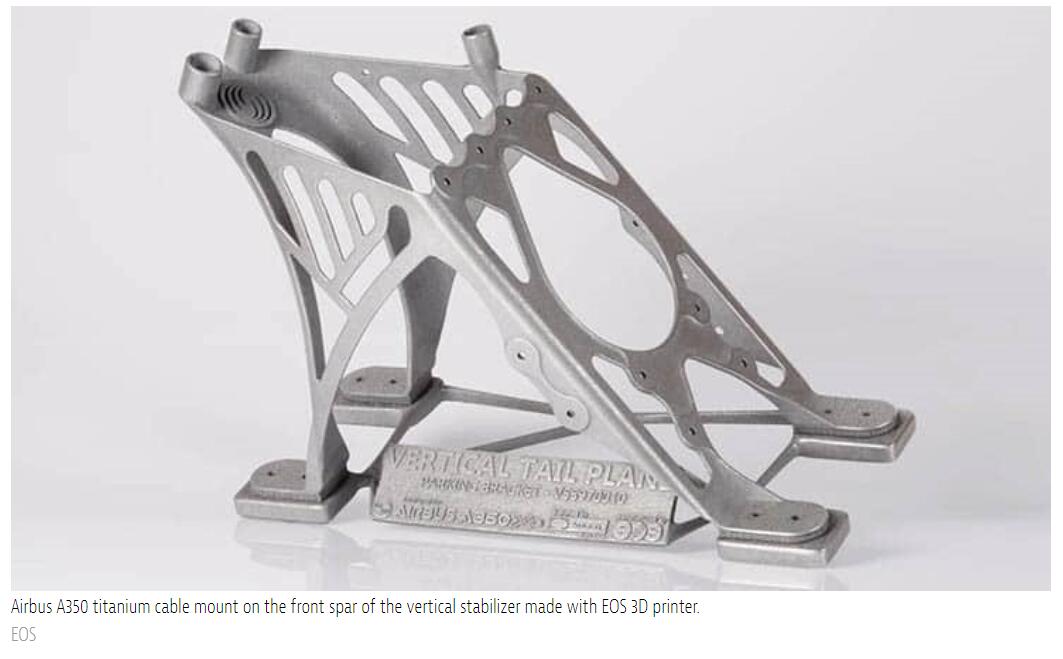Welcome to Sino Bearings web
24x7 HOTLINE:+86-28-81454188

 NEWS
NEWS
Hyperion Metals Ltd. is partnering with industrial 3D printing solution supplier EOS GmbH to accelerate the deployment of Hyperion’s HAMR and GSD technologies for the potential production of low cost, low-to-zero carbon titanium metal powders. The collaboration will focus on:
Technical and economic evaluation of powders produced via the hydrogen assisted magnesiothermic reduction (HAMR) and granulation sintering and deoxygenation (GSD) processes for use in additive manufacturing as compared to the current titanium metal powders
Recyclability of titanium metal powders using the HAMR and/or GSD technology processes
Environmental and sustainability evaluation of powders produced via the HAMR and GSD processes for use in additive manufacturing versus other production processes
Sascha Rudolph, Commercial Director Metal Materials at EOS commented, “Our goal is to create innovative product and process solutions that help accelerate responsible manufacturing and sustainable solutions via industrial 3D printing technology. What is exciting is the potential for new, low cost, low carbon titanium powders that will provide organizations with both significant economic benefits and more sustainable solutions. The HAMR and GSD technology has the potential to lower the barriers to entry for titanium into existing markets of more conventional materials and will enable completely new mass market applications where high strength to weight are critical.
Our partnership with Hyperion changes this landscape and allows us to deliver cost- and resource-efficient next gen methods of extracting the value form this extremely valuable and scarce natural resource all the while reducing the negative impact on our environment.
Anastasios Arima, CEO and Managing Director of Hyperion Metals said, “Collaborating with EOS significantly advances our vision to bring sustainably sourced, low cost, and zero carbon titanium metal powders to international metal markets. More than any other 3D printing company, EOS has a similar value and vision in bringing sustainable manufacturing to the world and having a sustainable metal supply chain is crucial to that vision. Their experience in the additive manufacturing materials world is unparalleled. They have more than 25 years of experience working with metal powders and have a dedicated facility in Finland, EOS Metal Materials, that is focused on the development, design, and production of metal powders and processes.
“Hyperion, through its HAMR and GSD technologies, has the potential to produce zero carbon spherical titanium powders at a fraction of the cost of comparable titanium powders. Hyperion’s technologies have the potential to disrupt not just the titanium market, but also the far larger aluminum and stainless-steel markets.”
Hyperion has secured options for the exclusive license to produce low carbon titanium metal and spherical powers using the HAMR & GSD technologies invented by Dr. Z. Zak Fang and his team at the University of Utah with government funding from ARPA-E.
The HAMR technology has demonstrated the potential to produce titanium powders with low-to-zero carbon intensity, significantly lower energy consumption, significantly lower cost and at product qualities which exceed current industry standards. The GSD technology is a thermochemical process combining low-cost feedstock material with high yield production, and can produce spherical titanium and titanium alloy powders at a fraction of the cost of comparable commercial powders.
Detailed energy-economic analysis and process simulations were performed to estimate the energy consumption, emissions, and cost at mass production of titanium metal using the HAMR technology. The result indicated that the HAMR process is more than 50% less energy intensive and cost competitive with the Kroll process.
Hyperion has an exclusive license over the HAMR technology and is focused on scaling the technology targeting the use of titanium minerals produced in Tennessee as initial feedstock.
This presents a significant opportunity to re-shore a low cost, fully integrated titanium metal supply chain with the highest standards in sustainability, potentially zero carbon operations, and full traceability in a safe jurisdiction in the U.S. This HAMR process and the non-spherical powder produced alone can feed into the current titanium metal supply chain in the U.S. and Europe but can also be used for feedstock in further downstream processing.
GSD spherical titanium metal powder technology
Prof. Fang also developed a process which could either use HAMR powder, Ti-scrap, or Ti-sponge to produce spherical titanium metal powders for 3D printing applications. This granulation sintering and deoxygenation (GSD) technology is a novel method that synergistically combines granule spheroidization, sintering, and de-oxygenation into one integrated process for producing low-cost spherical titanium powder which significantly improves the yield and produces a spherical titanium alloy powder with low oxygen content, controllable particle size distributions, and excellent flowability.
This GSD process can also recycle titanium metal powders used in additive manufacturing for low cost.
Hyperion has exclusivity over this technology and aims to commence pilot production of spherical titanium powders in the Q3 2021. Initially using titanium scrap and/or sponge but with the ability to also employ used powders and eventually backward integrating with the HAMR powders.